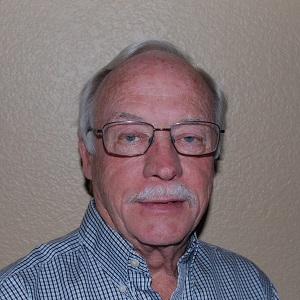It’s Time to Love the Cloud!
It’s Time to Love the Cloud!
Technology isn’t something to be feared. Used responsibly, technology is a tool that can assist us in our work. It’s Time for all of us to Love the Cloud!
Don’t you hate it when you can’t access the correct customer data or someone on your team has completed something, but you don’t have access to it?
These things seem minor in single instances, but the reason people love the Cloud is that these challenges, when constant, stop dealerships from moving forward. The Cloud unlocks data, unlocks your teams and does it all in usually a more safe and accessible way than traditional technology approaches.
The first thing to note is that people often don’t understand the Cloud. They either overcomplicate it or oversimplify it. Let’s see if we can get everyone on the same page about the Cloud.
I asked ChatGPT to tell me how to explain the Cloud to a six-year-old, and it came back with a pretty decent basic explanation:
“Imagine the Cloud like a giant invisible backpack in the sky. Instead of carrying toys or books, it carries lots and lots of information and programs for computers. So, when you want to watch a video or play a game on your tablet, the Cloud helps send that video or game to your tablet so you can enjoy it. It’s like a magical helper that stores and sends things to your device whenever you need them, making it easier for you to have fun and learn new things!”
But we’re still oversimplifying it. The Cloud isn’t something magical in the sky—instead, it comprises a vast network of connected super-powered computers and servers. They exist in physical format in giant data centers located around the world.
Instead of storing data or running programs on your personal computer or dealership servers, you can store them and access them through this network of computers on the Internet. While these servers sit in actual buildings and real places, for you, the user, it’s like having a virtual storage space and computer power that you can tap into whenever you need it without worrying about the physical limitations of your devices or servers.
So why has the Cloud become so essential and influential in helping us run our businesses?
The reality is that the amount of data and computing power we may need to operate effectively, combined with the need to share this across your dealership, has made the Cloud invaluable. It provides flexibility and accessibility.
This flexibility allows you to access your data and run programs from anywhere with an Internet connection, making it convenient and efficient for your business and personal needs.
Most small businesses can successfully leverage the Cloud. Here are the top four uses that can make a significant difference:
1.) Data Storage and Backup
Because the Cloud offers flexibility and relatively simple access, it is a wonderful place to store and back up data securely. It means your critical business data and information will be protected from loss due to hardware failure, theft, or disasters. Because cloud storage solutions offer scalability, expanding storage capacity as needed is easy.
2.) Software as a Service (SaaS)
Leveraging cloud-based software applications, or SaaS, for various business functions such as customer relationship management (CRM), accounting, project management, and collaboration is a cost-effective way to access robust solutions without upfront investments in hardware or software licenses.
3.) Email and Communication
Cloud-based email services, like Microsoft 365, offer small businesses and dealerships dependable and feature-rich email communication tools. These services also often include additional collaboration features like document sharing, video conferencing, and instant messaging – enhancing team productivity and communication.
4.) Remote Work and Collaboration
The Cloud enables dealerships to support remote work and collaboration among employees. Cloud-based productivity tools, file-sharing platforms, and project management software allow team members to work together seamlessly from anywhere with an Internet connection. This flexibility boosts productivity and enables businesses to adapt to changing work environments.
Making the most of the Cloud securely
While the Cloud offers flexible, scalable solutions that tend to be more secure than other solutions, it isn’t infallible.
Overall, the combination of expert security measures, continuous monitoring, redundancy, encryption, compliance, and access controls makes the Cloud a secure option for storing and managing data. But mistakes can still be made.
While Cloud service providers invest heavily in security measures and employ teams of experts to protect data, breaches can still happen due to factors such as human error, misconfigurations, or sophisticated cyberattacks.
Forty-five percent of breaches are cloud-based. According to a recent survey, 80% of companies have experienced at least one cloud security incident in the last year, and 27% of organizations have experienced a public cloud security incident—up 10% from last year.
According to recent research, the top security-related cloud threats are misconfiguration, data exposed by users, account compromise, and vulnerability exploits. This data tells you that it’s critically important for organizations to implement their own security best practices and carefully manage access to cloud resources to ensure maximum security.
This includes practices such as implementing strong access controls, encrypting sensitive data, monitoring for suspicious activities, and keeping systems and software up to date with security patches. Additionally, organizations should train employees regularly on cybersecurity best practices to minimize the risk of data breaches.
This can sound like a lot of work for a dealership, which is why getting the right support is so critical. Many companies are still relying on someone relatively IT-friendly getting involved or being asked to manage the IT on behalf of management. As IT gets more complex, this approach really isn’t viable anymore, but most dealerships can’t afford a fully internal IT department. The gap in between is the space where organizations get let down. Looking externally for a managed outsourced IT provider is a cost-effective and efficient way to solve this problem. Proper support can help you love the Cloud and IT.









